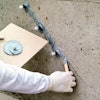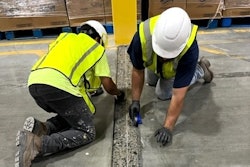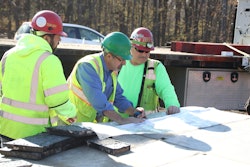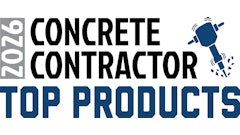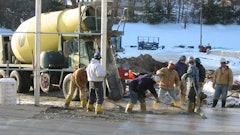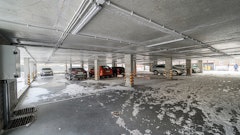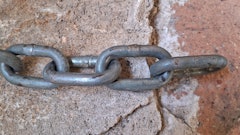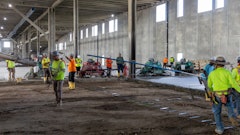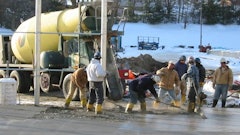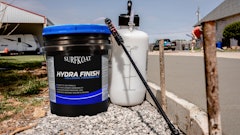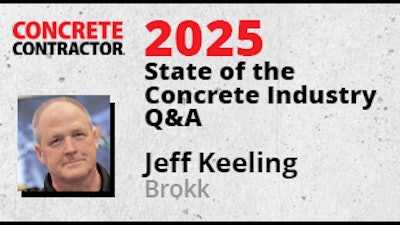
Jeff Keeling, vice president of sales and marketing at Brokk Inc., shares his insight into the state of the concrete industry and the challenges contractors are managing daily. Concrete Contractor connected with Keeling over email in June 2025.
Q. Where are concrete contractors at with employment and the skilled labor shortage?
![Brokk Jeff Keeling 5fb4013b86cf6 1 60663539ecc1d[1]](https://img.forconstructionpros.com/mindful/acbm/workspaces/default/uploads/2025/07/brokk-jeffkeeling5fb4013b86cf6-1-60663539ecc1d1.c6l7gTwjrr.png?auto=format%2Ccompress&fit=max&q=70&w=400)
We hear from contractors regularly who need to find mechanized alternatives to manual labor. Brokk’s demolition robots check those boxes with their remote-controlled power. They make short work of any demolition task with a single operator, who can position himself or herself with an ideal view away from any ledges, falling debris or other hazards. Contractors are looking for solutions like this to maintain their productivity in light of labor shortages and to protect the health and safety of their teams.
Q. Outside of the economy, what segments of concrete construction have seen growth in 2025?
In concrete demolition, customers currently have plenty of work. Some economic factors, however, are in a dynamic state at this time, which results in contractors being more conservative with equipment purchases. The trend we see is that they are buying, but only when they absolutely need it to fulfill a contract.
Q. How are contractors handling economic challenges?
The current economic challenges haven’t necessarily affected the volume of work our customers are seeing. We’ve seen that contractors do have projects, especially when it comes to infrastructure projects involving concrete demolition. However, rising costs for construction, insurance, direct labor and more have had an impact on project outcomes. This means many contractors have been mindful of their equipment purchases unless they need something right away to fulfill a contract. We’ve seen contractors waiting until paperwork is signed and a project needs to start before putting in an order for equipment.
One way contractors are handling some of these challenges is by investing in remote-controlled, mechanized solutions like demolition robots. A demolition robot can complete work faster with less safety and health risks than a traditional crew. And the machine requires only one operator, which means crews can cut back on their skilled labor needs. If a crew is participating in the demolition of a concrete structure, they can have a crew of two people for the robot plus cleanup. When adding an electric loader, they can cut down their crew requirements even more.
One team we recently spoke to completed a breakwater demolition with a crew of two. They were both experienced Brokk operators and worked in conjunction with two Brokk robots to break down the breakwater quickly. This significantly increased the project’s productivity and decreased the crew needs for the project. This is just one example of how we’ve helped contractors handle these challenges.
Q. How have contractors been impacted by tariffs?
The tariffs are definitely having an effect. As an equipment distributor, they make logistics trickier, especially since the situation is fluid. Ultimately, they affect pricing strategy.
Q. What are the latest changes for Brokk Inc.?
Recently, we became a dealer for FIRSTGREEN Industries’ electric, remote-controlled loaders and Ecovolve’s electric dumpers. We’ve also become the North American distributor for Darda, which manufactures hydraulic splitters and compact attachments, such as concrete crushers, shears and tank cutters. These additional equipment options pair well with our remote-controlled demolition robots. From breaking with a Darda splitter and Brokk robot to moving debris with a FIRSTGREEN loader and an Ecovolve dumper, we can now offer a full electric demolition system.
Brokk also launched the new Brokk 130+ at bauma, which will be available in North America this fall. We think customers will really like this machine, which is set to replace our most popular model, the Brokk 110. This robot features SmartPower+, which was launched last year and makes the machine easier to operate, has better response times and provides consistent power delivery over time. Like the Brokk 110, the Brokk 130+ is compact, but it has much more power. For its weight class, it handles the largest hammer in the industry.
Q. What innovations in equipment do you anticipate in concrete equipment for 2025 and the near future?
We’ve seen a push toward electric equipment, which is something our team continues to observe. Virtually all large and midsized heavy equipment manufacturers have introduced an electric option in the last few years. As an electric equipment distributor ourselves, it’s been an interesting process to watch unfold. And it’s created opportunities to add electric equipment that complements Brokk robots. We’ve been able to partner with innovative companies FIRSTGREEN Industries and Ecovolve to add electric loaders and dumpers to our lineup. Rather than offering a single electric product, we’re able to offer electric equipment for multiple steps in the demolition process.
Brokk and FIRSTGREEN are remote-controlled, so we also follow that technology closely as it develops. The technology is such a game changer for safety that it gets a lot of interest.
Q. What has caught your interest lately in concrete?
We were excited to work with a demolition contractor on a recent project. Their team decided to take on a concrete removal project for a breakwater in Lake Michigan. They needed to break away 2 ft. of damaged concrete before another team came through and repoured, adding an additional 2 ft. to the original height of the breakwater.
The team before them tried using a mini excavator for the job, but they were only able to break out 20 ft. of concrete a day. With a tight deadline, they weren’t able to work fast enough. So, they reached out a contractor in the area to see if they could get the job done faster.
The new team used a Brokk 300, a Darda C12 splitter and a Brokk 500 with a BHB 552 breaker to crush the concrete. In just 9 days, they removed 420 tons of concrete, making the process 7.5 times faster and completing the project with plenty of time to spare.

